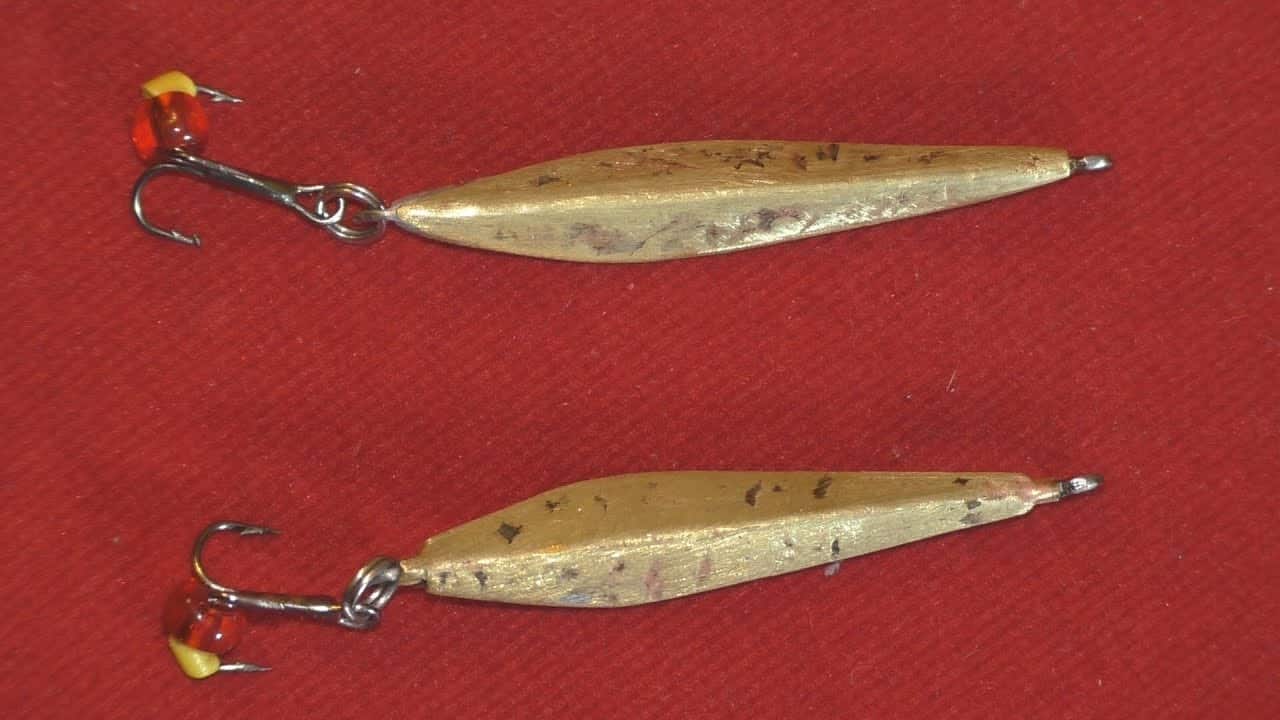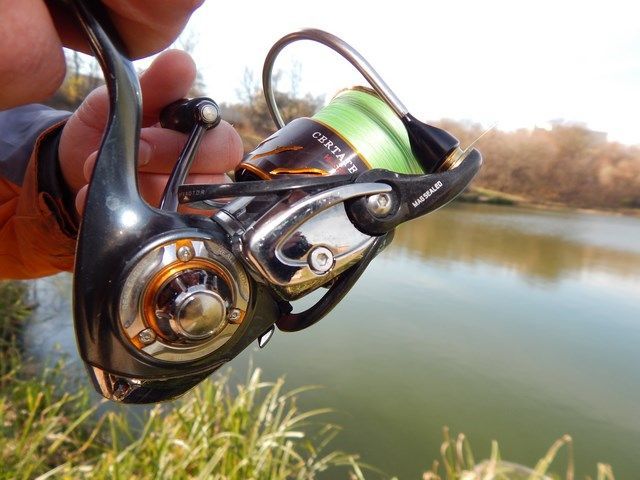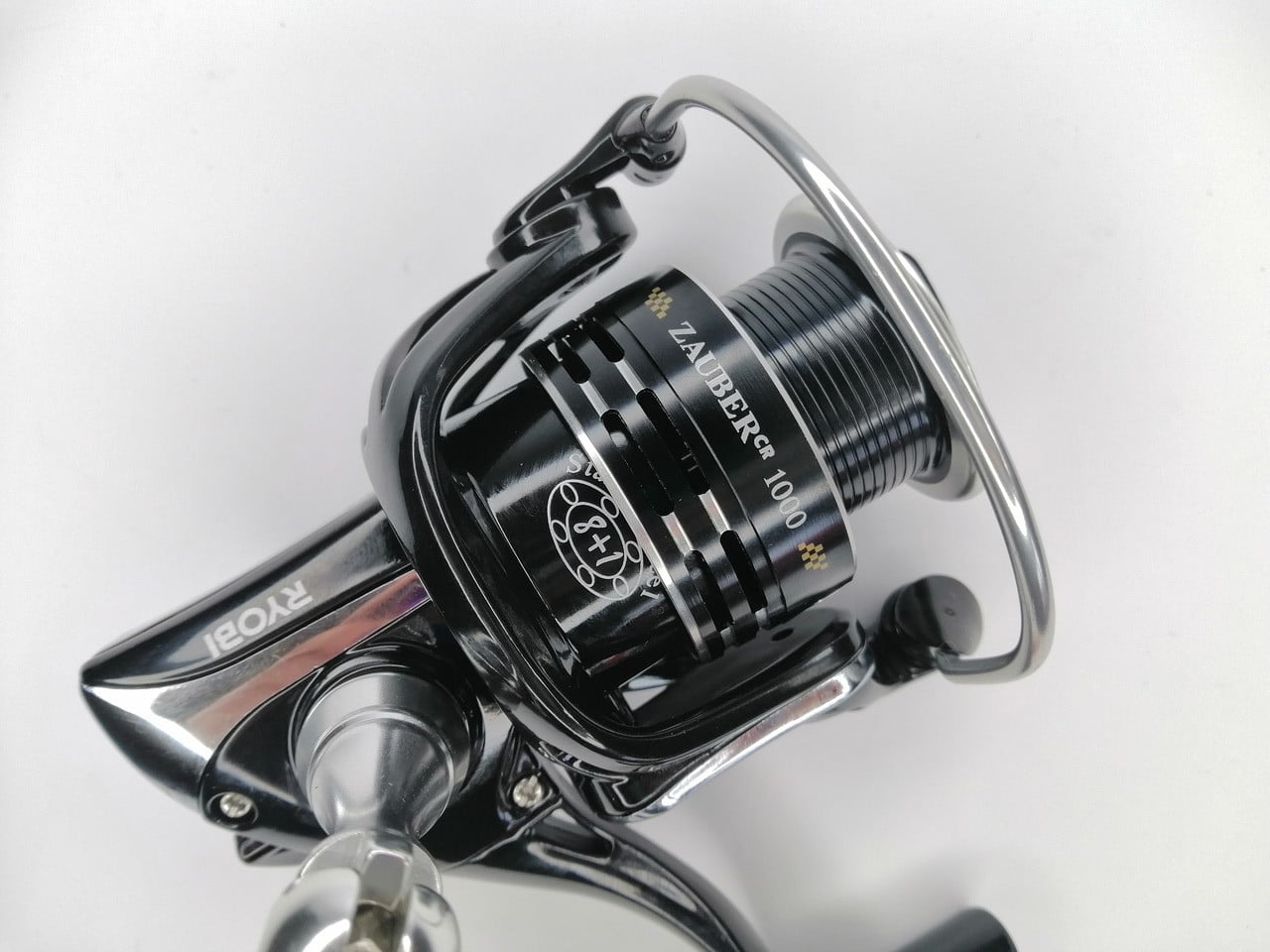Using a suitable method of tying your spinner can be very important. Often the fisherman uses one of his favorite knots, not thinking about the fact that others can be used. In order to choose the most suitable knot option depending on the fishing conditions, you need to familiarize yourself with the various types of knots that are used to tie the spinner.
- Why is it important to tie spinners correctly?
- Basic rules and tips for tying spinners
- How to tie a lure to the fishing line correctly
- Non-tightening knot
- Fastening the lure with a clinch knot
- How to tie a spinner to a fishing line with a Lindemann knot
- How to tie a spinner to a braid
- Palomar is a proven knot for tying spinners and other baits to the line
- Gripping knot
- Rapala knot
- Double clinch
- How to properly tie a lure to a fluorocarbon line
- How to tie a lure to a leash
- Nodes for amphipods
- How to tie a lure to your ice fishing line
- Поделиться ссылкой:
Why is it important to tie spinners correctly?
Each fishing tackle has to use one or more knots. If they are not tied correctly, they can come loose or cause the line to break under mechanical stress. When a fishing line or cord is tied in any knot, it will reduce the strength at that point. But correctly made knots reduce the strength to a minimum. In order to minimize the loss of strength, the following methods can be applied, for example: Do not tighten the wood completely to the end. In this case, it will be compressed to a lesser extent, which will increase its strength.
- Use a self-tightening or movable assembly.
- Place a small piece of fishing line inside the knot. This tying method is more time consuming than usual.
- You need to wet the knot before tightening. This reduces the effect of frictional force.
- The strength of the line is determined by the strength of the weakest section. Most often it is an improperly tied knot.
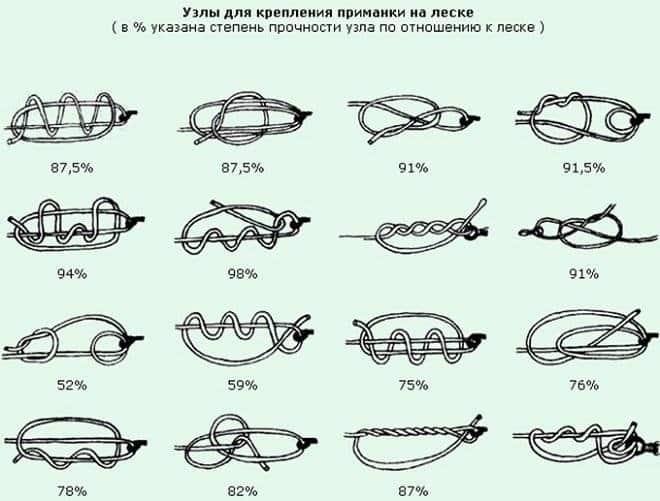
Basic rules and tips for tying spinners
When attaching lures, it is not always necessary to tie them with knots. If the lure can twist the line or line (spinner always, some spoons), you can use a
swivel to prevent this.
Tying the bait too tightly will affect its play. Movement will become more constrained and unnatural, which is likely to scare the fish away.
When making an ultralight rig, it is important to lighten the rig as much as possible. In this case, it is also convenient to tie the spoon directly. When choosing a suitable node, it must be borne in mind that it must satisfy the following conditions:
- The knot should be as strong and strong as possible.
- It must be effective at the moment the fish is hooked.
- It is necessary that the fisherman can tie it quickly and securely.
- The choice of the node is determined by whether it will fit the planned bait play.
The knot must be strong enough to support the weight of the fish. Finding the perfect one is very difficult. Therefore, in each case, the fisherman must look for the most effective option in these clearly defined conditions.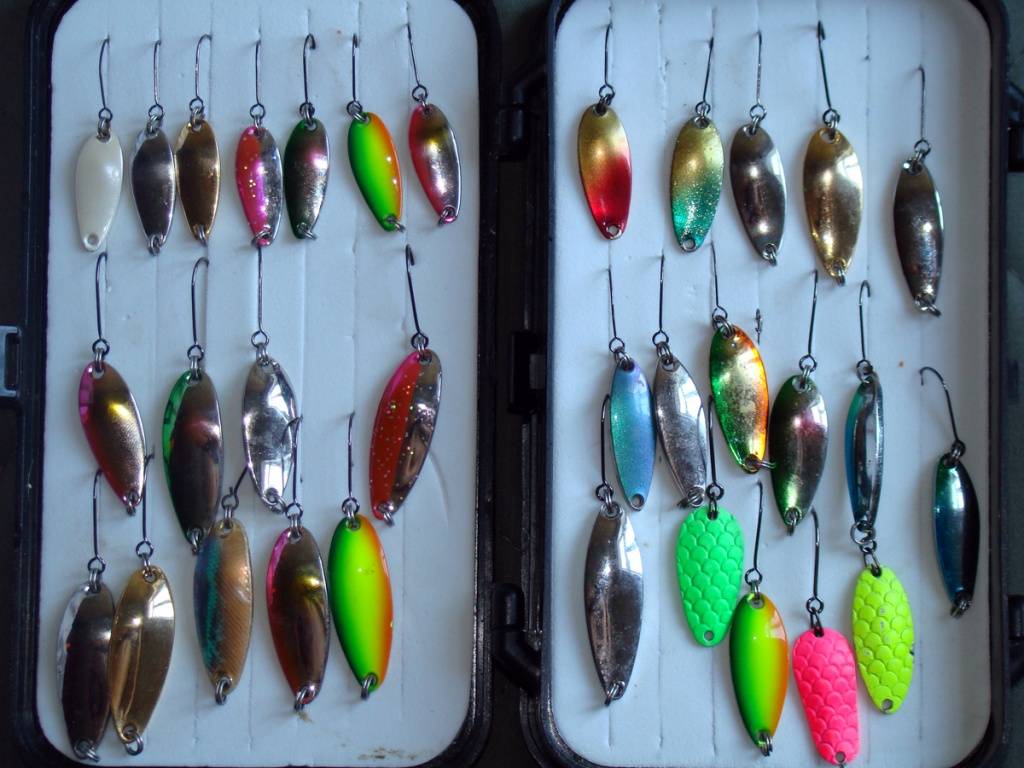
How to tie a lure to the fishing line correctly
The following describes the most popular types of knots that are used for lines. They need to be tied carefully, only in this case they will demonstrate maximum strength.
Non-tightening knot
Sometimes you may need a non-tightening knot designed for free play of spinners. For this purpose, the following binding option can be applied:
- A simple loop is made at the end of the line.
- After it, the tip of the fishing line is threaded into the loop of the spinner.
- The tip must be threaded into the prepared loop as follows. It is inserted into the loop from top to bottom, and carried out on top of the main line. Then it is brought into the loop from top to bottom, carried out under the fishing line inside and removed from the loop from above over the outer part of the loop.
- The knot is tightened, and the excess part of the line is cut off.
This knot is shown in detail in the following diagram:
Fastening the lure with a clinch knot
This knot is very popular. Both beginners and experienced fishermen love to use it. Clinch is done as follows:
- The free end of the fishing line is threaded through the spinner ring.
- Return the tip back and circle the main line with it many times.
- The free edge is passed through the lure eye and repeatedly wrapped inside the loop again.
- After wetting the line, the loop must be tightened.

How to tie a spinner to a fishing line with a Lindemann knot
This knot is used when fishing with a mono line. Its important advantage is its high strength. To tie it, you need to do the following: The fishing line is passed into the eyelet of the loop and stretches a little through it. Then it is led back and again threaded through this eyelet, forming a loop. The free edge is brought back, then passed through the resulting loop. It is looped inside the loop 5-6 times, wrapping it around the double part of the fishing line. The knot is tightened after wetting. The tip is cut off so that it does not stick out. This knot is easy to learn. By tying it several times, the fisherman will be able to use it regularly.
How to tie a spinner to a braid
The use of braiding has its own characteristics. This material has a high stiffness and is only able to tighten slightly. This places additional demands on tying knots. The following are the nodes that are commonly used in such cases.
Palomar is a proven knot for tying spinners and other baits to the line
This knot is most often used to tie a lure to the braid. It is done as follows:
- The cord is folded in half and threaded into a loop of spinners, and then tied.
- A spoon is threaded through the loop.
- Tighten the knot.
- Trim off the remainder.
This knot is rarely used with thick braids and for spinners with a wide eyelet.

Gripping knot
It is considered one of the simplest. Step-by-step instructions for knitting it are as follows:
- The fishing line is threaded through the ear with spinners.
- The tip is drawn several times (usually 3-4) around the main part of the line.
- It is threaded under the twisted part of the line, then into the space between the line and the twisted part, then tightened.
- The remaining protruding piece is cut off.

Rapala knot
To tie this knot, you need to do the following:
- Make a loop near the edge of the line. It is not necessary to delay it at this stage.
- The tip is threaded into the ear of the spoon.
- It is passed into a previously prepared loop and returned to its place.
- The tip is wrapped around the main part of the line 4-5 times.
- The tail is pulled through the loop again. In this case, another loop is formed.
- The free edge of the fishing line is pulled through it.
- Tighten the knot.
To make it more durable, you must wet it before tightening.
Double clinch
This knot has a relatively high strength. To link it, do the following:
- The free edge of the fishing line is passed through the eye of the bait.
- The withdrawn tip is folded in half. For this, it is necessary to provide 10-15 cm. The single tip should protrude a few centimeters outward.
- The double part is wrapped around the main line 5-7 times.
- The protruding single tip is threaded through the fold of the part wrapped around the fishing line.
- Tighten the loop after wetting it.

How to properly tie a lure to a fluorocarbon line
For
fluorocarbon line you can use the Grinner knot. It is known for its high strength and good carrying capacity. This knot is also applicable to other types of fishing line. To bind it, perform the following actions:
- Pass the end of the string through the eye of the bait, leaving the end 15 cm long.
- Attach it to the line.
- Make a simple loop on the main part.
- Wrap the tip several times around the main part of the line inside the loop.
- Moisten and then tighten the line. The protruding tip must be trimmed.
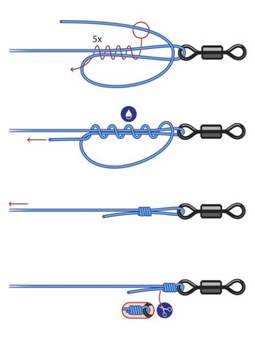
- The fishing line is threaded into the eye of the bait and stretched 15 cm.
- Form a simple loop.
- Another part of the fishing line is wrapped with a free edge. Make another simple knot.
- Wrap the main part of the line 5 times.
- The free tip is pulled into the original loop.
- Then the knot is tightened, after wetting it.
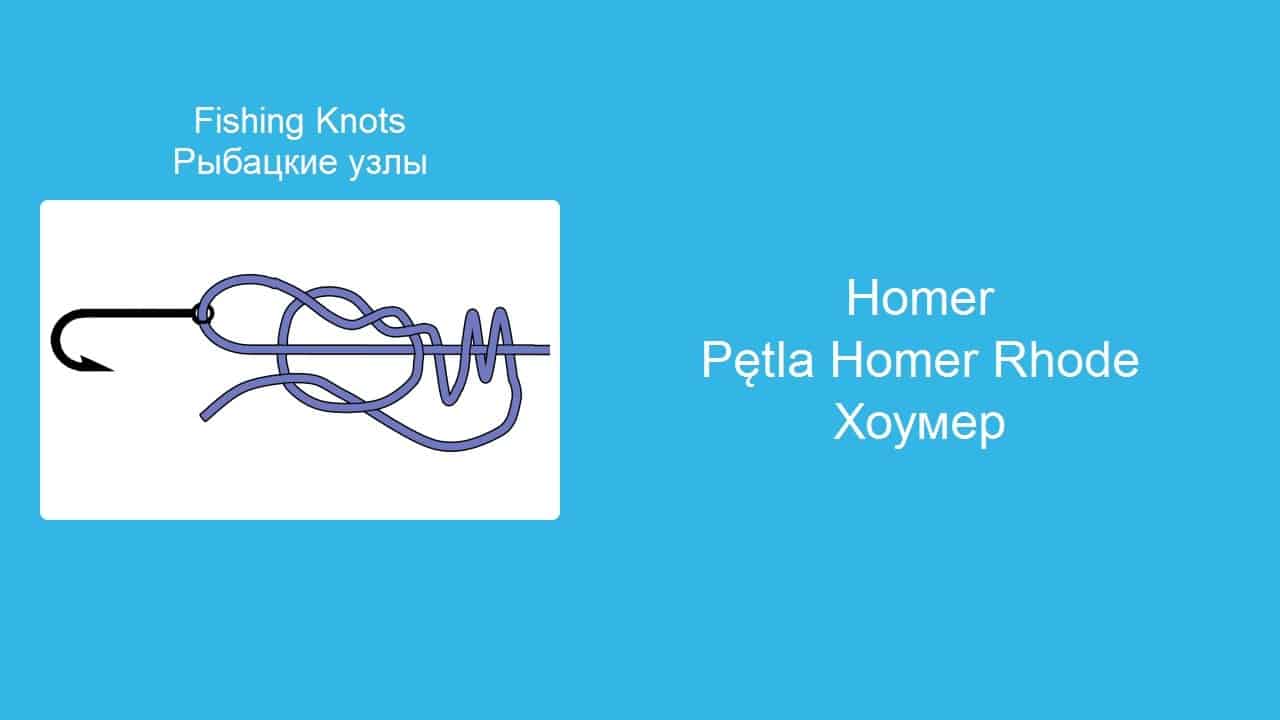
How to tie a lure to a leash
For tying to a leash, relatively simple types of knots are often used. The most commonly used is ”
Eight “. To do this, you need to perform the following actions:
- The line is folded in half.
- Turning, make a loop.
- The fold of the double-folded fishing line is threaded twice into it.
- The loop is tightened.

- You need to hold the tip of the leash through the eye of the bait.
- After that, you need to circle the edge on the other side and thread it through the eyelet again.
- The free part is wrapped around the main line.
- Then the tip is threaded through the loop formed when the bait is wrapped by the leash.
- Then the knot must be tightened.

Nodes for amphipods
This is one of the varieties of artificial baits. It looks like a small fish with three hooks and an edge in the tail. This lure is able to quickly reach the desired depth. It is convenient to use the following knot to tie the amphipod. To use it, you need to follow these steps:
- You need to thread the line through the hole in the middle of the bait. Usually it is wound on the convex side.
- Then you need to fold the tip of the line in half. In this case, you need to provide a margin of 25-30 cm.
- Form a loop and fold the free end so that an eight is obtained.
- The free end must be wrapped 4 times at the point of contact of the two loops. After that, it must be put into a loop and tightened.
- You need to take a tee and run the line through the ring.
- The loop must be put on the tail of the bait and then tightened.
In order to apply another method, you need to use a bead. To bind the bait, you need to do the following:
- The line is passed through the middle of the amphipod from the convex side.
- Then it is threaded through the bead.
- A self-tightening loop is made as described in the first method.
- The line is passed through the ring on the tee. It is passed through a loop, then the knot is tightened.
The process of tying an amphipod is discussed in detail in the video: https://youtu.be/1W7AgmLCoTk
How to tie a lure to your ice fishing line
For this purpose, you can use the node “Executioner”. It is done as follows: You need to stick the fishing line through the loop of the spoon.



